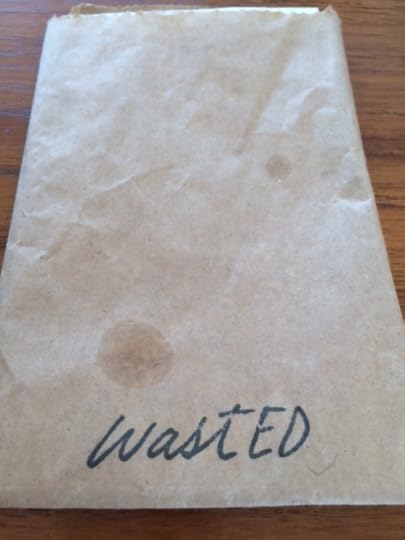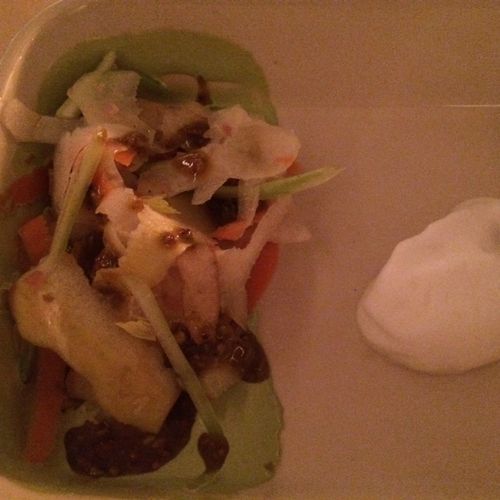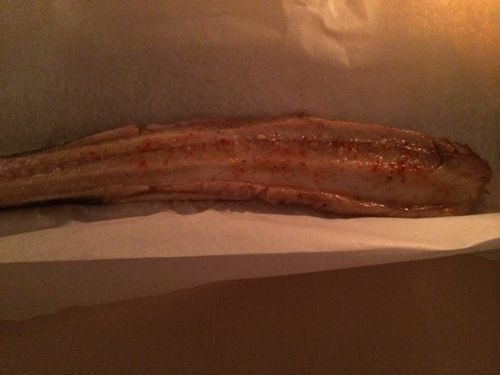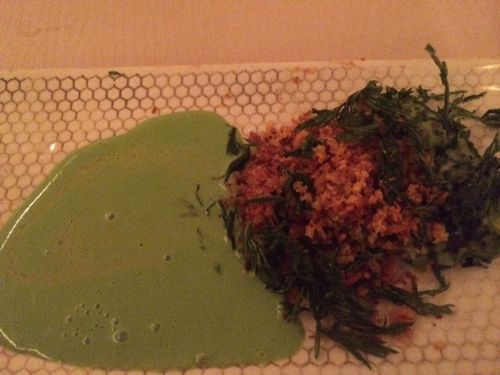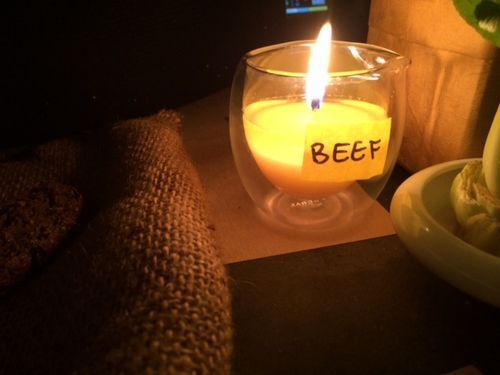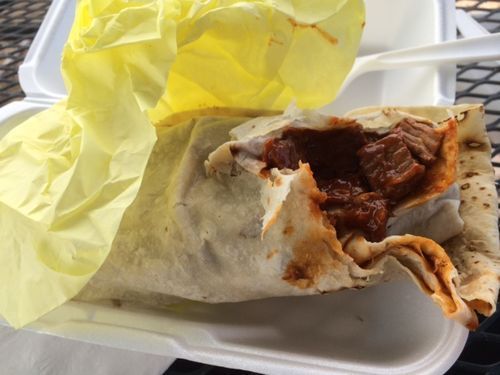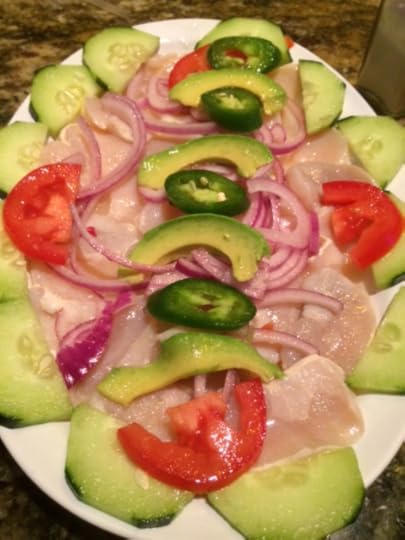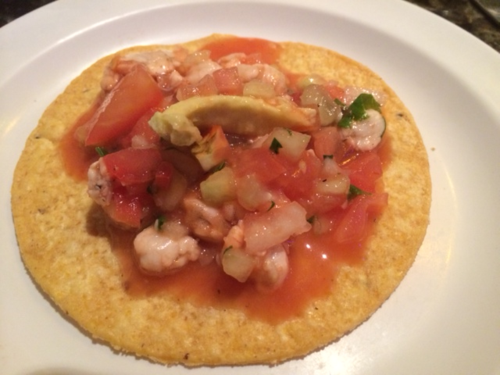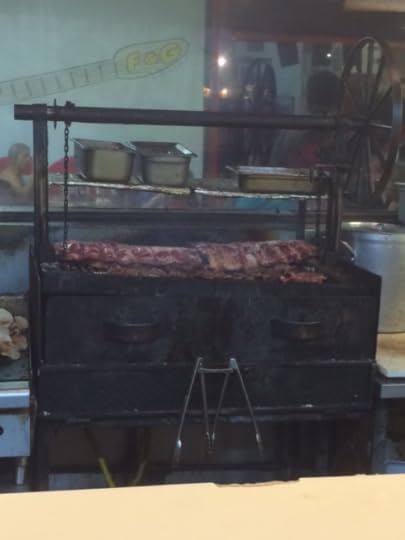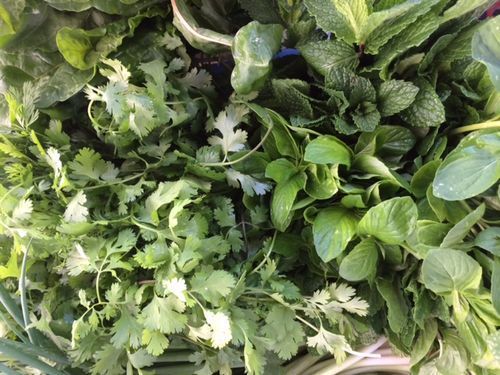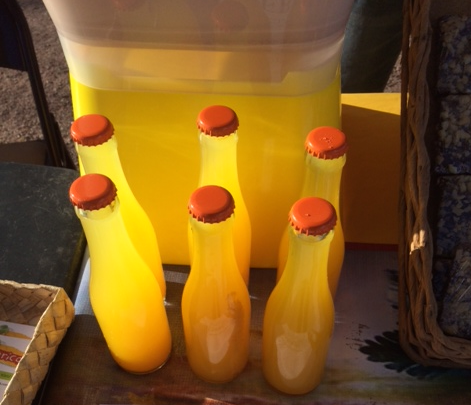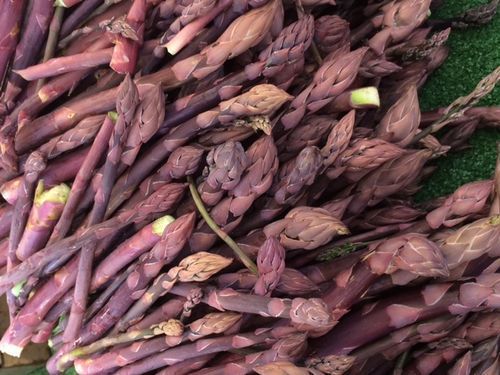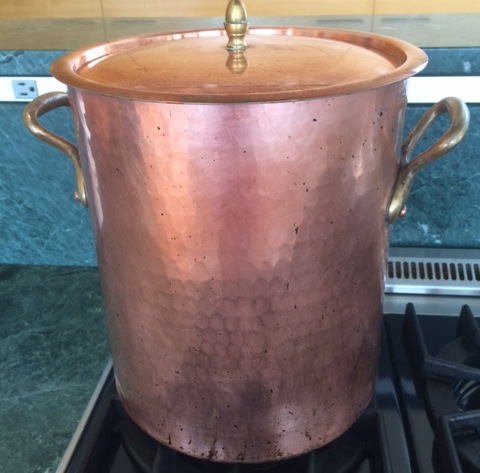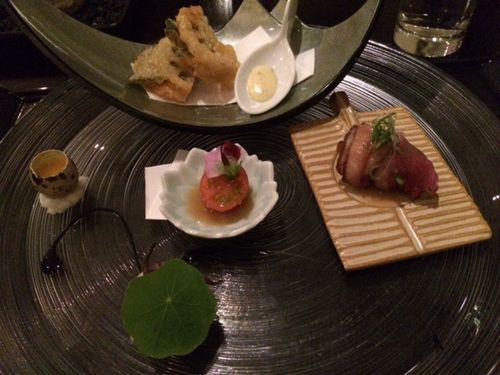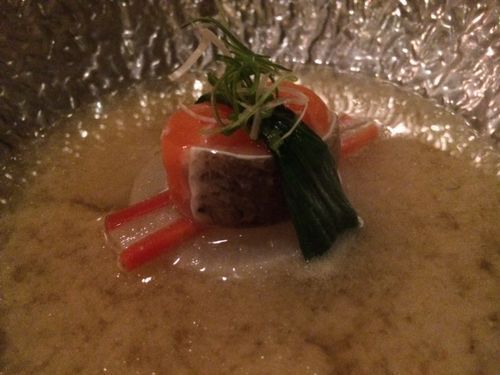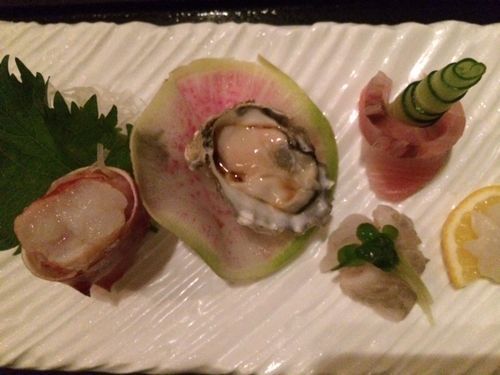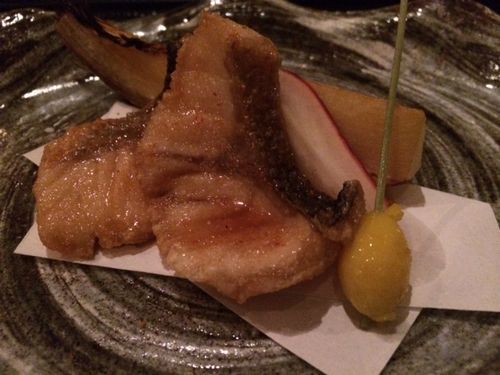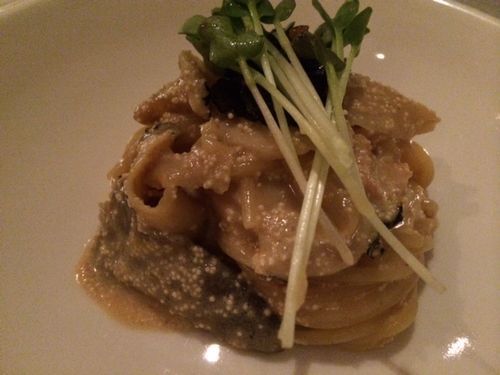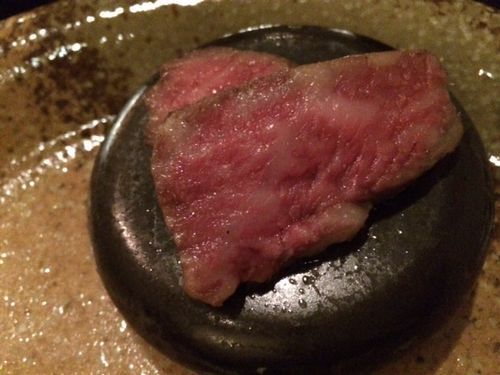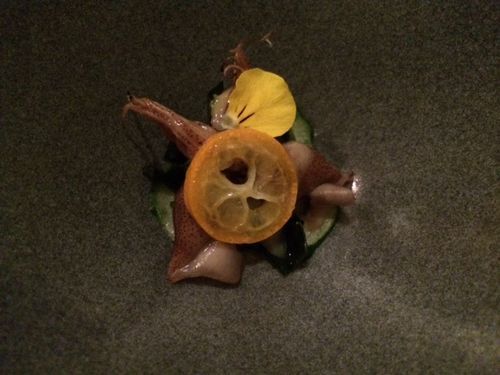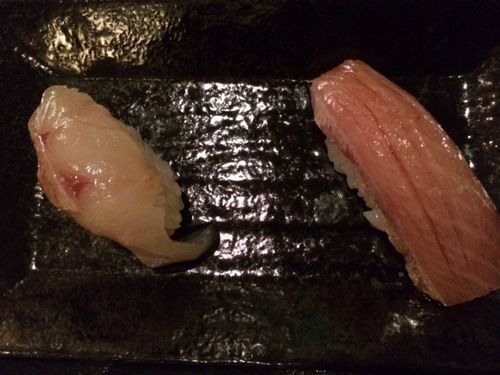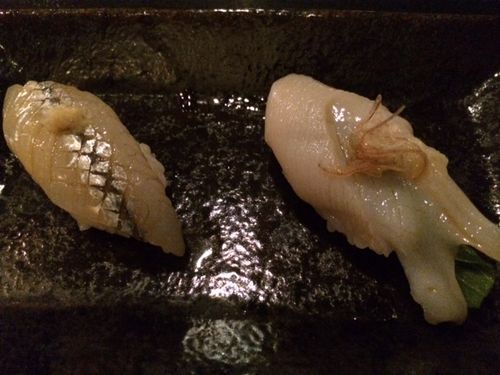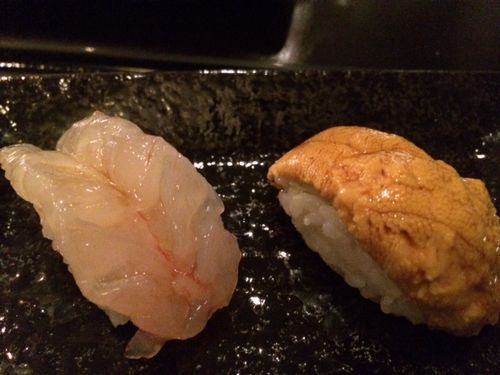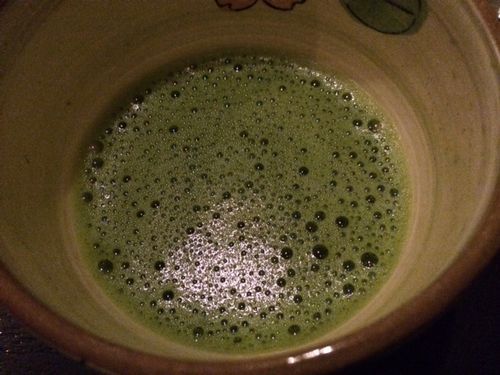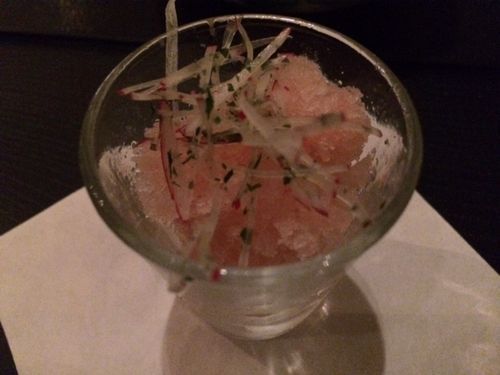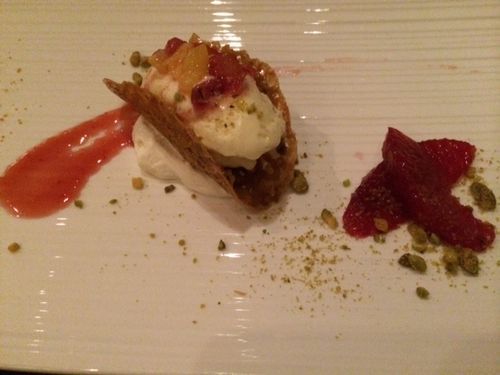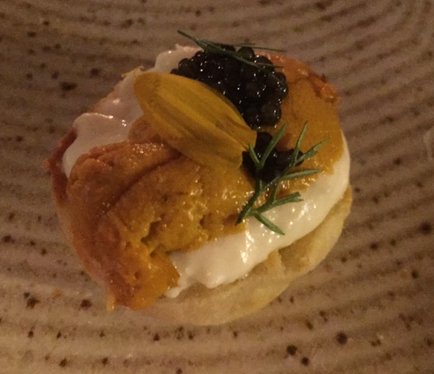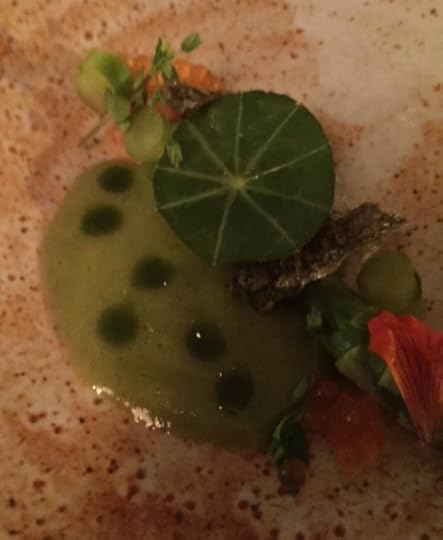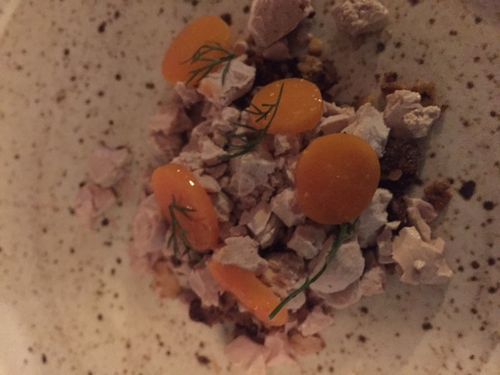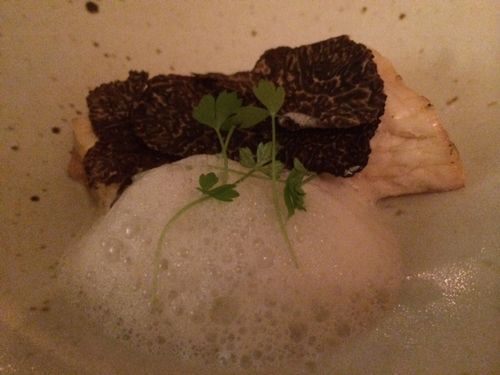Ruth Reichl's Blog, page 13
March 22, 2015
Reason to Rise
Rice Waffles
There is nothing as luxurious as a really great waffle. On this snowy morning the knowledge that a big bowl of waffle batter was slowly puffing itself up in the kitchen propelled me right out of bed.
I'm a longtime fan of Fannie Farmer's classic yeast waffle recipe, which I first encountered in Marion Cunningham's wonderful The Breakfast Book. But this is a new twist: I used rice flour instead of wheat. The result: waffles so light they seemed to float off the griddle and hover in the air. Waffles so light they dissolved the instant they hit the tongue.
Many thanks to Anson Mills, whose 13 colonies rice waffle flour is unlike anything I've used before. Like Sean Brock (with whom they've partnered), Anson Mills has embarked on a quest to bring back the heirloom crops of the antebellum Carolina rice kitchen. They've searched through seed libraries, looking for southern crops that disappeared with the industrialization of American farms, and brought them back. Take a look through their site; this is is agricultural history at its most intriguing.
This rice flour is specifically intended for waffles, which were extremely popular in the old south, and often served at dinner with fried chicken. Personally, I prefer them in a starring role at breakfast. A perfect start to the day.
Note: Anson Mills cuts this rice flour with pastry flour. If you’re using ordinary rice flour, be sure to use half rice and half wheat flour.
Rice Waffles
(adapted from Fannie Farmer and Anson Mills)
1/2 teaspoon instant yeast
1/2 teaspoon plus one tablespoon sugar
1 1/2 cups Anson Mills 13 colony rice flour OR 3/4 cup rice flour plus 3/4 cup all-purpose flour
1/2 teaspoon salt
4 tablespoons butter
1 cup whole milk
1 egg
1/2 teaspoon baking soda
Dissolve 1/2 teaspoon instant yeast and 1/2 teaspoon sugar in 1/2 cup warm water (be sure the water is not too hot or it will kill the yeast). Set aside.
Whisk the flour, salt, and remaining tablespoon of sugar in a large bowl.
Slowly melt half a stick of butter, allowing it to turn a slight, nut-like brown. Remove from the heat and stir in the milk. When it's cool enough to stick your finger in, add the yeast mixture.
Stir the liquids into the flour, mixing well. Cover the bowl with plastic wrap and leave on the counter to rise overnight.
The next morning, stir in an egg and 1/2 teaspoon baking soda. If the batter feels a bit thick, add up to 2 tablespoons more milk.
Pour batter into a hot waffle iron: how much batter you use will depend on the size of your iron, but in my old fashioned cast iron waffle iron it makes about 7 waffles.
Eat with maple syrup, apple syrup or, in true southern fashion, sorghum. Or simply eat the waffles piping hot, unadorned, with your fingers.
March 20, 2015
Ridiculous Spinach
Les Epinards du Chanoine Chevrier
as recounted by Elizabeth David in Mediterranean Food
“...Brillat-Savarin was intrigued by this spinach cooked in butter. Here is the famous secret.
On Wednesday (for Sunday): choose your spinach, young leaves, neither too old nor in flower, of a good green with their middle ribs. In the afternoon clean the spinach, removing the stalks, and wash it carefully. When it is tender, drain it in an enamel or china colander; drain out as much water as possibly by pressing the leaves firmly down in the sieve; then chop them finely.
Now put into the a pan (enamel or glazed earthenware) with some fine fresh butter and put on to a very low fire. For a pound of spinach allow 1/4 pound of butter. Let them cook gently for 30 minutes, then take them off the fire and let them cool in the same pan. They are not to be served today.
Thursday: Add another ounce and a half of butter to the spinach and cook again for 10-15 minutes over a very low fire. Again, leave them to get cold. They are not to be served yet.
Friday: Exactly the same operation as the previous day. Do not be tempted.
Saturday: Again the same operation. Beware of temptation; the spinach will be giving out a wonderful aroma.
Sunday: At last the day for your guests has arrived. A quarter of an hour before you intend serving dinner, put the spinach again over a low flame, with two good ounces of butter, for 10-12 minutes. This time take them out of their pan and put them in a warmed vegetable dish and serve them very hot.
In the course of five daily cookings, your pound of spinach has absorbed 10 1/2 ounces of butter. Such was the Abbe Chevrier’s secret.
Elizabeth David adds: “It is advisable to cook at least 2 or 3 pounds if all this performance is to be gone through. The given amount of butter will still impart a good flavor to the spinach.
I think even Thurber (whose famous New Yorker cartoon was, "I say it's spinach. And I say to hell with it.") might have been impressed.
March 18, 2015
Last Night at Blue Hill
The room has been transformed, the walls obscured by "row cover," the fabric farmers use to protect their crops. The tables are also new in every sense of the word; they were grown in February with compostable materials and mycelium. The result is cozy and warm, a bit like eating in a cocoon.
And the menu, it's safe to say, is unlike any you have seen before. WasteEd, Dan Barber's pop-up in his Blue Hill restaurant is intent on reimagining waste, making something out of what is usually thrown out. He's invited 20 different chefs to join him, creating special dishes on successive nights. Last night Alex Raji made pork skin noodles with ruby shrimp, Iberico-Choicero pepper XO sauce and potato skin dashi. Tonight's chef is Alex Stupek.
But the bulk of the menu belongs to Dan and his teams, and it is completely fascinating food. This is what I ate last night.
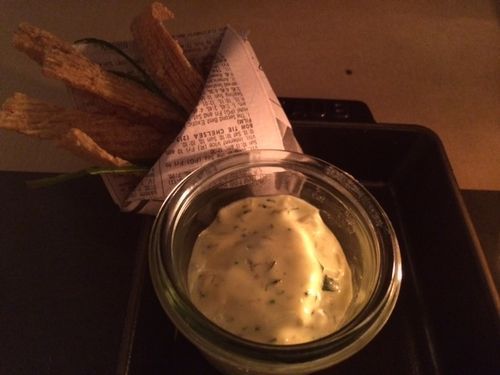
Hidden inside that little paper cone are the most delicious warm fried skate wings - the bones you usually leave behind. They're so crisp they crackle as you bite into them. The tartar sauce is infused with smoked whitefish heads. So much more satisfying than french fries!
This salad is made from damaged storage apples and pears, along with the leavings from a major commercial food processor. The vegetables are crisp and fresh, with a hint of pistachio dancing along the edge of the flavors. That whipped stuff on the side that looks like cream? It's just the water from cooked chick peas that's been whipped.
Cured pork from a waste-fed pig, served with melba toast made from leftover oatmeal.
This may have been my favorite dish of the evening: it's what's left after the smokehouse cuts the filets off the sable (or black cod), which is usually thrown out. Meat is always sweetest close to the bone, but when you run a knife along this tender, silky, luxurious fish you encounter something remarkable. It's even better dunked into carrot top marmalade and parsley vinaigrette.
Monkfish have the ugliest heads, which are usually discarded. The cheeks are called wings, and fried they can give chicken a run for its money. The hot sauce on the side is made from the almost-forgotten fish pepper, which was once ubiquitous in the crab joints of the Chesapeake.
You can burn beef tallow, and WasteED does. It gives a lovely light.
You can also pour it into a dish and dip this chewy bread into it.
There was more - a "burger" made of the pulp left in a vegetable juicer, a sorbet made of cocoa pod husks, a bread pudding made from whey. It was all delicious. Cooks have been using scraps for thousands of years, and it's good to be reminded that talented chefs can do remarkable things when they choose to cook low on the hog. In ordinary times, everything we ate last night would have gone into the garbage. And that's just wrong.
The dishes on the WasteEd menu are $15 each, and you'll want to try everything. But there's not much time; come April, WastEd vanishes and Blue Hill Returns.
Sean Brock, of Husk in Nashville and Charleston will be the final guest chef. Should you want to join him, for free, Tasting Table is running a sweepstakes for dinner for two.
And if you're looking for some useful tips to use at home, Gabrielle Hamilton's new cookbook, Prune, has an entire chapter called Garbage. I learned a lot.
March 17, 2015
WastED
Have you read Dan Barber’s book The Third Plate?
It’s the critical text for this moment in food. I recommend it to everyone.
In it, Dan argues that if we’re serious about a sustainable food culture, our understanding of “good food” must evolve to include the leftover bits: the stems, the bones, the wheys. Brilliantly, he shows how reconsidering garbage is also critical to advancing cuisine.
Most food traditions are challenged to make food scraps appetizing in lean times. Think of the ancient - and irresistible - peasant stews of France and China. Think of our own scrapple. But fast food has changed all that; now it's become cheaper than food. And we've become a nation of wasters.
Dan's latest endeavor aims to change that. WastED is a food-scraps pop-up featuring a different star chef each night at Blue Hill; I think it's the most exciting culinary event of 2015. And it's happening right now. The chefs' challenge? Make delicious food out of perfectly good “waste” from every stage of the food production process. Not only will diners play judge to masters at the top of their game - Dominque Crenn, Nancy Silverton, Sean Brock - but they'll get an education. And it's affordable: each dish is only fifteen bucks.
The pop-up runs through the end of this month, so make your plans now. Reservations before 9pm, walk-ins only after.
An example from last night: “rack of cod” with carrot top marmalade and fish skin-parsley vinaigrette!
March 16, 2015
Notes from Tucson
So beautiful here! The sky is blue, mountains ring the city, and all around us the cactus are in bloom, spreading a surprising carpet of yellow, pink and red. The air sparkles.
"What do I eat in Tucson?" I asked friends. And the universal answer was this: Go to the Anita Street Market and order a red chile burrito.
The Anita Street Market is exactly what its title suggests: a humble market on Anita Street, in an ancient (and extremely picturesque) barrio on the other side of the tracks. You can't help feeling that you've walked onto the set of some old Western movie about a dusty town near the border. It's a surprise, then, to enter the market and find that the place is incredibly friendly. (And there's a lovely little picnic area outside.)
The tortillas - some the huge Sonoran size - are extraordinary. And the red chile is the real thing; slightly spicy, chewy, filled with flavor. I absolutely loved it.
The other "must have" in Tucson is a Sonoran hot dog. For that we went to El Guero Canelo, which might be the cleanest fast food place I've ever patronized. The hot dog itself is wrapped in bacon, served on a soft bun that looks like a canoe and topped with a large and improbable array of ingredients that includes beans, chiles, onions, tomatoes, canned mushrooms and cheese. I thought I'd take a bite; I inhaled the entire thing.
The irrepressible Janos Wilder took us (David Tanis, Jean-Pierre and Denise Moulle), on a small tour of his favorite places, which included the truly fabulous Mariscos Chihuahua on Grande street. (There are apparently many Mariscos Chihuahua, but they're independently owned and not a chain. So don't go to the wrong one.)
There are many reasons to come to this restaurant: the seafood is fresh, the limes plentiful, the salsa incredibly appealing. But for me the piece de resistance was Mexican scallops unlike any I've ever tasted. Called "manos de leon," (lion's paws), they are eaten sliced and raw. I've never had scallops as sweet as these; I felt I could have gone on eating them forever. (I ate one with the jalapenos, which was a mistake; these scallops are far too delicate to be bullied by chiles.)
We also had fantastic ceviche which we ladled onto crisp tortillas, topped with sliced avocados, squirted with juice from the tiny delicious local limes and some of the exceptional salsa.
We didn't try any of the cooked dishes - but given the quality of what we ate I can't wait to go back for that. We ended with this fantastic "cocktail" of small, tender shrimp.
From there we went on to Tacos Apson, one of the funkiest, funnest taco places I've ever encountered.

The fantastic ribs are cooked on an ancient grill, coming off crisp, chewy and completely delicious. We topped them with onions, salsa, cucumbers, radish and more of that wonderful juice from the tiny limes, then folded them into the tortillas. As David Tanis tends to say, "I like this."
The tongue was also great; they were, unfortunately, out of cabeza, but if you're interested in exploring various innards this is the place for you. They offer just about every possible part of the beast, including tripe.
Other highlights of my time in Tucson included a trip to the farmers' market at the race track, where I found these gorgeous greens
This refreshing turmeric and ginger tonic
and best of all, these absolutely incredible purple asparagus, which I ate raw, nibbling them all the way down to the bottom. My first taste of spring, and quite a promise.
I'm at the airport now, and I suspect more winter is in my future. But there's a lot more to explore in Tucson. I'll be back.
March 14, 2015
Seafood Watch

Two decades ago, concerns about overfishing and all the problems with farmed fish felt abstract. We didn’t expect most chefs to source seafood locally. We generally had no clue where the fish in the market came from. And we were buying terrible shrimp without even knowing it.
But the tide is shifting. Though the word “sustainable” has obscured the human cost of food production, it’s a real victory that "sustainable fish” has become important on a national level.
More than any other product of our natural environment, it’s difficult to keep track of international fishing and farm fishing conditions. For many years, the Monterey Bay Aquarium's Seafood Watch has put out an app to address this difficulty. If you’re hoping to buy salmon at the market but can’t remember whether Atlantic farmed or Alaskan farmed is the better choice, Seafood Watch will instantly tell you. They'll also tell you why: they frequently update the information on every recommendation.
Though I can’t see myself pulling out Seafood Watch mid-shop, even a quick browse offers a terrific education. And if you're eating sushi? You can search in Japanese.
March 5, 2015
Amazing!
A Fantastic Way to Clean Copper
See this pot? I wish I'd taken a before photo. Fifteen minutes ago it was covered with a patina of grime. Now, however, thanks to an old book called Queen of Clean, it is shiny and proud.
What is the secret? A paste made of catsup and Worcestershire sauce. Really! You mix the two into a paste, pat it on, and then using a nonabrasive scrubber, simply take it off. I'm truly stunned.
March 4, 2015
Things I Love: Dandelion Chocolate

Here's another bean-to-bar outfit I can’t resist: Dandelion Chocolate, made in San Francisco. Like Askinosie, Dandelion seeks out small-yield cacao producers and treats them fairly. Then they test the beans, intent on coaxing the most flavor out of each one by using different roasting methods. Finally they grind and "melange" the chocolate, adding a bit of sugar. Dandelion chocolate contains only two ingredients: sugar and chocolate.
If chocolate has terroir, then this one has it in spades. Each time I take a bite I can't help imagining the ground the beans were grown in. Why that fruity acid there, and how this caramel nuttiness?
My favorite? Their Liberian chocolate bar. Here in upstate New York, it's the perfect antidote to this last snowy gasp of winter.
February 28, 2015
Penultimate Meal in LA
"Here?" said the Uber driver. "You sure?"
From the outside N/Naka does not look like a restaurant. It's just another nondescript building on a nondescript stretch of Overland Avenue in a nondescript section of West L.A. Inside, however, is one of the most luxurious restaurants in the city, a simple but serene setting where some twenty lucky people are treated to an extraordinary experience.
Niki Nakayama creates a long, languorous meal of modern kaiseki, a ritual meat of seasonal dishes intended as a kind of edible poetry. 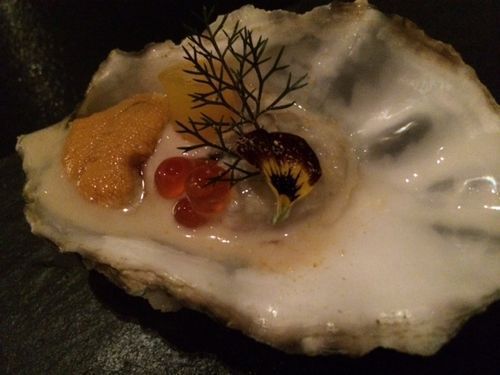
Sakizuke (something common and something uncommon):
A single kumamoto oyster with a bit of uni, cured salmon roe, a bit of fennel from the chef's garden.
Zensai - main seasonal ingredients served as appetizers:
Fried lotus root at the top, very rare duck on the right. But the most exciting part of this dish is the squiggle of squid ink that, mixed into the quail egg yolk, becomes an intensely delicious sauce for the octopus hiding beneath that nasturtium leaf.
Modern Sashimi
Hokkaido scallop and a bit of pomelo strewn with leaves and flowers from the chef's garden.
Owan - still water
Served on top of a flame, this little bit of sea trout slowly heated in its white miso sauce. A lovely play of temperatures, the fish still cool in the hot sauce.
Tsukuri - sashimi
Many delicious little bites here, but the special treat was that Alaskan crab leg on the left: translucent, tender and sweet. It did not resemble, in any way the stringy frozen crab legs you may have tasted elsewhere.
Yakimono - traditionally a grilled dish, although this fish was fried int he most ethereal manner, along with a single fat fried ginko nut.
Mushimono: steamed dish
Crab chawan mushi, rich with uni.
Shizakana
For me the most astonishing dish of the evening. This pasta was perfectly al dente, vibrant, almost alive in the mouth. The pickled cod roe was a perfect textural contrast.
Niku - meat course
Wagyu cooked on a hot stone. The evening's least interesting offering.
Sunomono - vinegared salad
Firefly squid, sliced kumquat, flowers.
Followed by a rice dish.
The sushi, tonight, is:
Buri, tuna
Sayori, giant clam
Ama ebi, uni.
Matcha- green tea
Mizumono - dessert.
A tart, icy granita, and
This little cannoli.
February 25, 2015
My Dinner at Alma
When we pulled up for dinner at Alma last night, I went to park the car in the lot next door. Meanwhile Michael sat on a bench outside, having a chat with a man who hit him up for enough to buy a bowl of chili. "I gave him ten bucks," Michael said, "and I bet he's going to enjoy his dinner more than I enjoy mine."
Wrong.
Although Alma is aimed at adventurous eaters, even a reluctant gourmet like Michael is bound to come away happy. When the dishes hit - which they do most of the time - they're really delicious. And when they don't, they offer very interesting food for thought.
These were the hits (at least in my opinion) of our dinner.
Uni on a teensy english muffin with a bit of caviar and a few leaves and petals. How could this be anything but fantastic?
It was followed by a lovely little tofu and seafood beignet, which I gobbled up while it was still warm, neglecting to photograph it. I liked that beignet a lot, but I wished it had been a little less timid. Seaweed is such a fine, forceful flavor, and here it seemed muted.
Ari Taymor is fond of surf and turf combinations, although he always does it his way. Here the surf is trout and trout roe, the turf asparagus and nasturtium. These flavors did a little tango together, weaving in and out, hitting new flavor notes I didn't know any of the ingredients were capable of. Total hit.
The first time I tasted frozen, shaved foie gras was at David Chang's Ko, and I was totally smitten. Foie gras does something amazing when it melts in your mouth, becoming even softer and richer than it is in its native form. Taymor pairs the frozen foie gras with coffee granola - which gives it both flavor and texture contrast - and a splash of maple. I loved that combination. Not sure those carrots were absolutely necessary.....
Bad picture of a totally great dish. Sunchoke soup, which has its own intensity, paired iwth date puree and an egg yolk cooked until it's practically taffy. This is a little symphony of soft textures, and completely appealing. I'll never look at sunchokes the same way.
Sturgeon and black truffle. Need I say more?

The simplest dish of the evening, and for me, the highlight. This was the most delicious duck; if we'd had nothing else I'd go back just to experience it again. The skin was crisp, the meat as funky and metallic as the best aged beef. But what put it over the top was the bitterness of the endive, and the gentle citric zing of the poached kumquats. (The little duck boudin, up top, was also a treat.)
It was followed by a few interesting desserts - more savory than sweet - and a finale of chocolate-covered, salt-sprinkled mentholated marshmallows. A fine way to end a really wonderful meal. 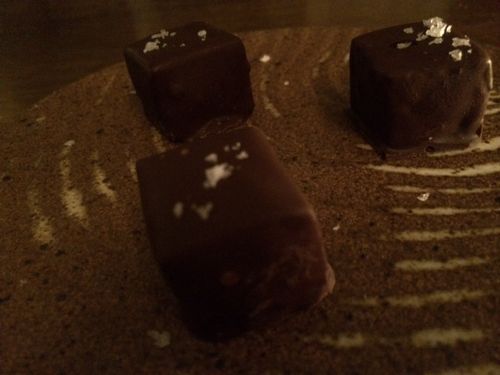
Ruth Reichl's Blog
- Ruth Reichl's profile
- 2980 followers



